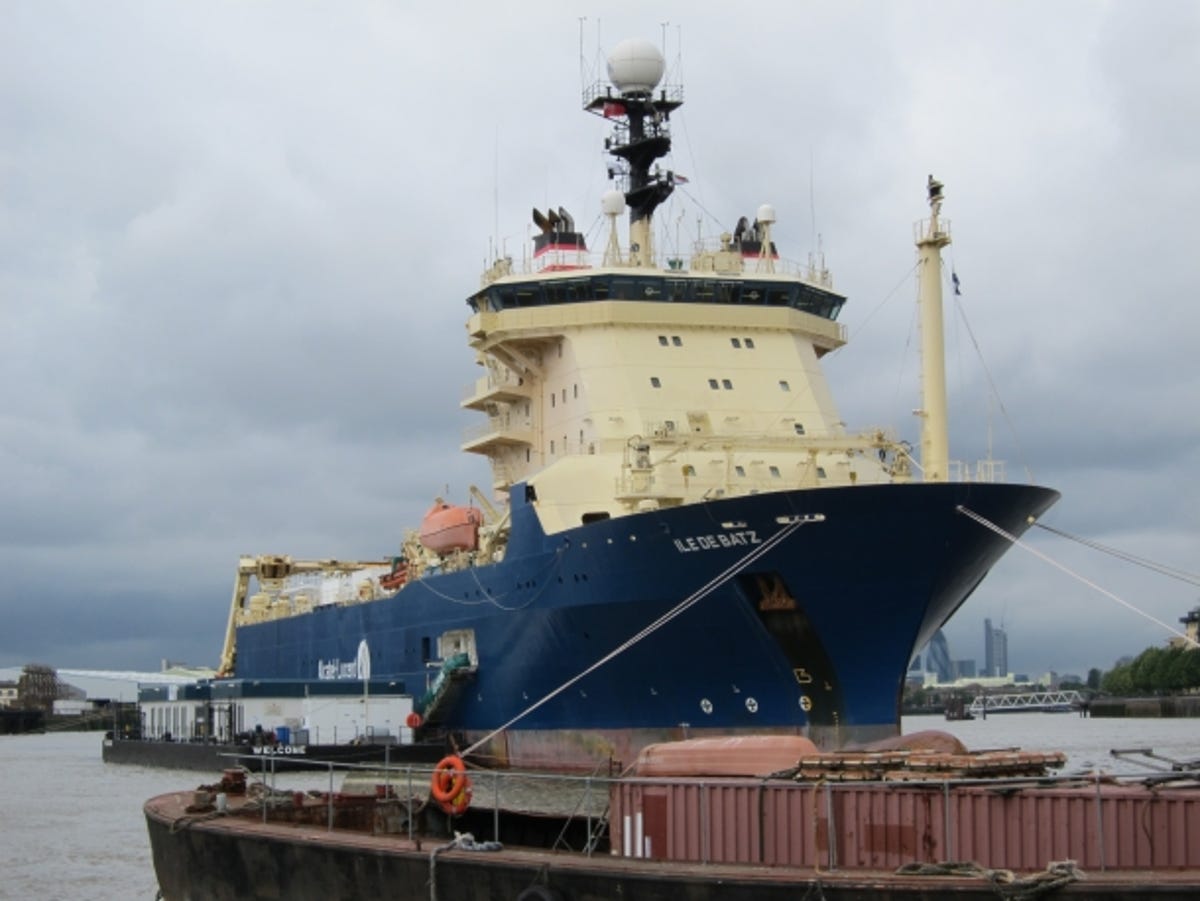
Ile de Batz
The Ile de Batz is one of three dedicated ships that Alcatel-Lucent uses to lay the submarine fiber-optic cables that carry broadband connectivity across the oceans. The ship is usually based in Calais, France, but made a stop recently in Greenwich, England, to pick up components from Alcatel-Lucent's factory. The telecommunications infrastructure company invited ZDNet UK to see the factory and the ship, and have a look at a vital part of the global Internet that's normally hidden by miles of water. The Ile de Batz usually spends between 30 and 40 days at sea on each voyage. It can lay up to 200 kilometers (120 miles) of cable per day, in normal conditions, to a depth of about 8km. That cable and its components are expected to have a lifespan of about 25 years.
Philippe Dumont
Philippe Dumont is in charge of Alcatel-Lucent's submarine network business. The market for such deployments, he said, has remained "quite stable" over the last couple of recessionary years, which "came as quite a surprise" to Alcatel-Lucent.
Dumont said the biggest cabling project in the world right now is Africa, but the connectivity being deployed there will be quite different from what people in the U.K. are used to. "Access to the Internet in Africa is mostly based on mobile," he said. "You will not see DSL, but you will see mobile broadband through smartphones and USB dongles."
The biggest part of the traffic in such a deployment will come from consumers, followed by enterprise customers such as banks that have been somewhat cut off from the world's Internet infrastructure until now.
A big cable deployment can be worth around half a billion dollars, so telecom operators tend to invest in such projects through consortia, rather than on their own. According to Dumont, the competition between consortium members will drive down prices for end users.
Submarine cable
Here, a member of the ship's crew shows off the various thicknesses of cable that are deployed from the Ile de Batz.
The different sizes are used at different depths, although surprisingly the larger diameters are used closer to the surface. The top example in this picture is the lightweight cable that Alcatel-Lucent uses in very deep oceans, where ships' anchors pose no threat. The shallower the waters, the more heavily-armored the cable needs to be, as depicted in this progression of thickness.
If cut, the cable can be repaired--Alcatel-Lucent has more ships on standby around the world for this purpose--but each reconnection degrades the system gain of the cable. The system is designed with enough headroom to tolerate a certain number of repairs.
Cable-splicing machine
Molding machine
Cable tank
Here is one of the Ile de Batz's two main cable tanks, with a small amount of spare 17mm cable included for the benefit of those touring the ship.
Each of the ship's two cable tanks can hold up to 5,500km, or 3,000 tons, of fiber-optic cable. There are also two spare tanks, each with a 250-ton capacity.
Linear cable engine
The plow
Control systems
Greenwich factory
Repeater
Branching unit
Power feed equipment
This power feed equipment, produced at Alcatel-Lucent's Greenwich facility, is destined to be deployed where the WACS line comes ashore in Congo. This is the kit that powers the repeaters along a submarine cable.
Alcatel-Lucent's Dumont said he expects the big African deployment to wind down around 2012 for the cable part, after which a second wave of transmission backhaul will be rolled out.
"We think Asia will be next--there is [capacity] but not so many connection points," Dumont said. "China has a lot of needs, as do small countries like Vietnam. The west of Australia also has very little connectivity."